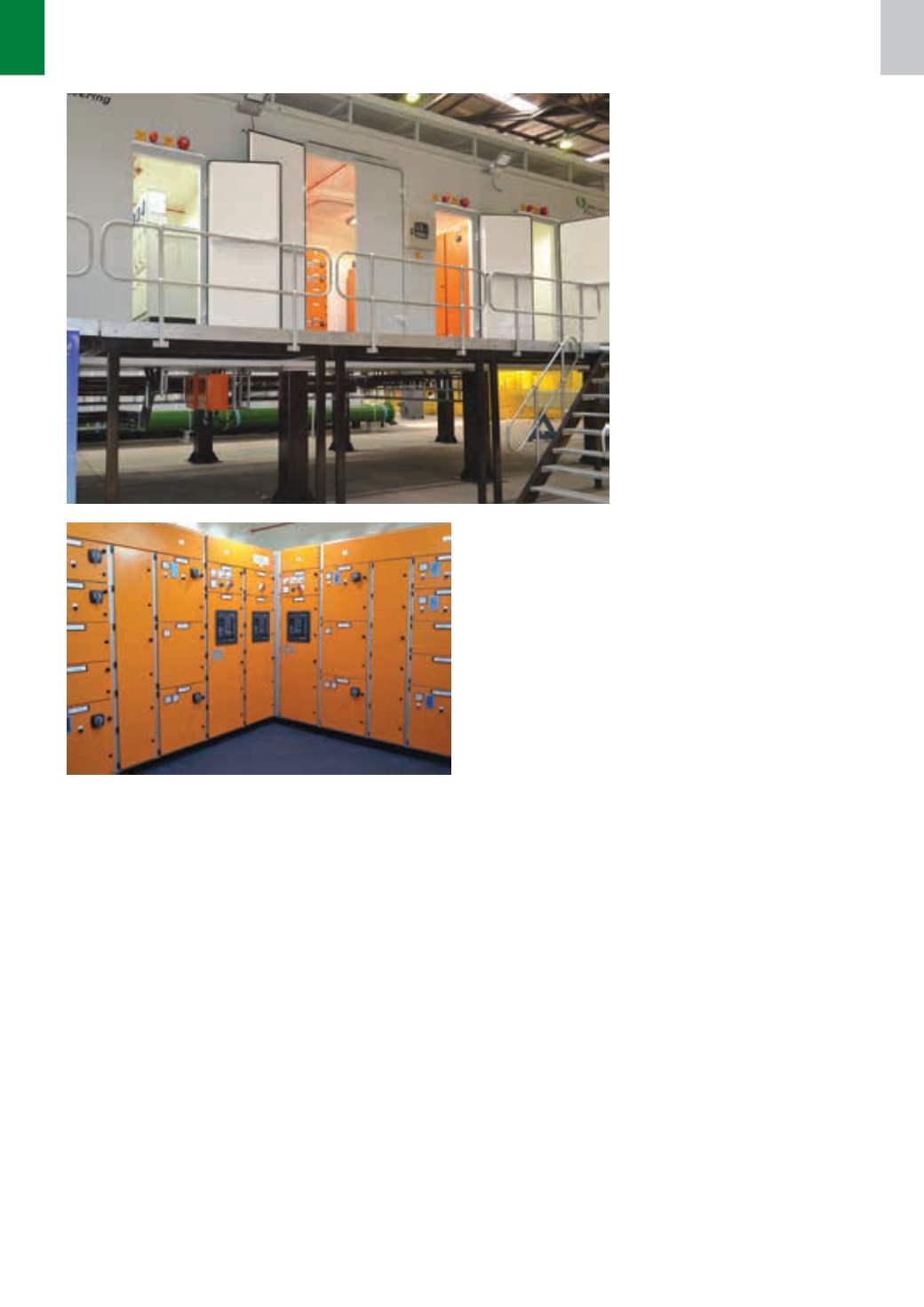

10
Mechanical Technology — February 2016
⎪
Special report
⎪
on the electrical side, therefore, when
another pump station project emerged,
Jackson, together with Kevin Hundley
who was with Aurecon at that time,
began to explore a similar approach.
The mining pit at Sishen, which is
one of the largest open cast pits in the
world, is getting deeper, so an additional
dewatering pump station is required.
Similar to the Kolomela pump station,
an additional 1 800 m
3
/h station with
a modest 40 m head was proposed. At
Sishen, water from the pit is pumped into
a reservoir and then gravity fed into the
Vaal Gamagara system.
“To accommodate pumps, however,
we knew that we needed big concrete
blocks to cater for the 35 t of thrust and
the vibration issues. But we remained
convinced that pump stations could
also be built using the offsite modular
approach,” says Jackson. “And if it were
possible to house and equip a pump
station building offsite, we would change
the execution strategy completely, from
an onsite nightmare to a plug-and-play
dream,” he adds.
“Along with people such as Stephan
Kleynhans from Aurecon and his spe-
cialised team, we indentified the issues,
went back to first principles, did the
calculations and designed a structure.
We determined that, if we mounted the
pump station module on a 3.0 t concrete
plinth and included vibration dampers for
decoupling, then an entire pump station
could be delivered as a module in a large
custom built container,” Jackson explains.
As an additional benefit, the ‘building’
becomes structurally sound and dynami-
cally optimised, purpose-designed to best
suit the equipment it houses. The only
site-based construction requirements
are the concrete plinth and, for a pump
station, some key thrust points designed
to transfer loads through appropriately
placed beams.
This solution was completed late last
year and delivered to site during the last
week of November. Jackson describes
some of its features.
Built into the housing structure is an
overhead crane, enable installation and
servicing of the heavy pumps and piping
systems. So the steel frame of the build-
ing had to accommodate the lifting loads.
Shuttering formwork and a steel re-
inforcement cage was also incorporated
below each pump, so that once the pump
station was delivered to site and placed
on its plinth, the shuttering can be low-
ered to the floor to enable the void below
the pump to be mass filled with concrete.
This creates the base support needed to
transfer the thrust. So the steel building
incorporates its own concrete former.
Rag bolts are included to allow for
adjustments and should the mine wish
to move the pump station to a new loca-
tion, the entire module can be discon-
nected from its suction and discharge
flanges, lifted off the plinth and moved
to a new one.
To further facilitate delivery and
installation, Efficient has developed a
highly innovative hydraulic lifting system.
“Because of the costs and logistical is-
sues associated with cranage on remote
mining sites, we have developed an
amazing hydraulic jacking system to
make loading, unloading and installa-
tion simple and delay-free. Typically, to
accommodate safety and reach issues,
an oversized crane would be needed to
load and unload a module of this size.”
According to Jackson, the hire of a
700 t crane can cost up to R1.4-million
plus R11 000 per hour thereafter. “With
our system, we typically budget around
R150 000 to deploy and lift a module
into place,” he estimates.
Initially based on a telescopic jacking
system with hydraulic rams, an Efficient
shop floor foreman came up with the idea
of a vertical lift system based on a forklift
mechanism. “So we went to a forklift
specialist, who designed a system based
on six synchronised forklifts running off a
central hydraulic power pack. The ‘jacks’
are bolted onto the module, and each
can lift 20 t, giving a total safe lifting
capability of 120 t,” Jackson explains.
Once attached, the lifting system
raises the module to allow a trailer to be
reversed underneath. Then it is lowered
onto the trailer for delivery to site. The
lifting jacks are removed and packed for
immediate use when the truck arrives
on site. “There, the entire pump station
Above:
The complete
pump station, which was
fully tested and commis-
sioned on the factory floor
of Efficient Engineering’s
Tunney premises, was
delivered to the Sishen
site and then deployed
and anchored to the plinth
in only three days.
Left:
The motor control
centres (MCCs) and the
pump system control-
lers are incorporated into
a separate room of the
pump house.
















